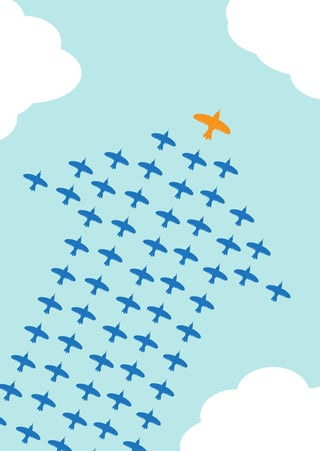 “I want your help developing my direct reports into stronger leaders,” John* the new CEO of Fasseni, a $350 million technology company, told me several years ago.
“I want your help developing my direct reports into stronger leaders,” John* the new CEO of Fasseni, a $350 million technology company, told me several years ago.
Initially, I approached the request like any consultant might.First, I asked John why he wanted my help. He told me that Fasseni had stagnated. They had been hovering around the same revenue point for years and their competitors were gaining market share. He saw opportunity and knew that success lay in the hands of his direct reports. That made sense to me.
So John and I defined a list of qualities a great leadershouldhave, like expertise in their field, strategic thinking capability, common sense intelligence, powerful communication skills, problem solving prowess, and similar traits.
Then I spent some time interviewing him and his direct reports to better understand their strengths and weaknesses as they related to the list of leadership qualities we had defined.
Identify the goal, assess the current situation, understand the gap, and then close it. Consulting 101. Simple, right?
Only in this case, it wasn’t so simple — because there was no gap.
On the whole, the leaders at Fasseni were smart, capable, communicative, strategic people. A few were even charismatic. They were good leaders. Maybe we could have made incremental improvements, but, I told John, I didn’t believe it would be a good use of his resources. Our work wouldn’t move the needle enough.
We sat in silence for a moment and then I chanced a gut feeling. “There is one more thing I’d love to do. I can’t exactly tell you why, but I’d love to see your direct reports in a meeting together.” He hesitated — so far I hadn’t added much value — but he took a risk.
Here’s what I saw:
One item on the agenda was the slow down in sales. When that conversation started, the head of sales started to defend his organization. Prices are too high, he said, because of the CEO’s focus on margins. If manufacturing could reduce costs, then sales would pick up.
Hold on, the head of manufacturing argued, we can’t reduce costs because of the way the product is engineered. If engineering didn’t overcomplicate things, the product would be cheaper to build.
Wait a second, retorted the head of engineering, we’re only responding to what marketing is telling us we have to create to meet customer demand. If we didn’t have to be so customized for each unique customer situation, we could engineer a more efficient product.
And so the conversation continued, like a game of hot potato, everyone hoping, desperately, that the blame wouldn’t land with him when the song ended.
“We’ve been focused on the wrong problem,” I told John at dinner that night. “You asked me to help you develop your direct reports into strong leaders. But they’re already strong leaders . . . individually. They’re just not strong leaders collectively.”
Each leader ran his organization successfully, aggressively pursuing his organization’s interests. And each one succeeded in meeting — often exceeding — his goals. Each one was committed to — and cared deeply about — his organization’s performance.
But that’s all they cared about — their own organizations. They were impressive as leaders, but destructive as a leadership team.
As I watched John’s team struggle, I was reminded of the popular columnist Dan Savage, who employs a formula of “good, giving, and game” on the topic of personal relationships. In some ways, a leadership team is no different than any long-term relationship. If you want to be a good partner — personally or professionally — you need to be three things:
- Gifted. Simply put, leaders need to be good at what they do. Smart, prepared, and well-informed, they need to engage in conversations with curiosity and capability. But to be on a team, they need to go beyond that. They need to be gifted communicators and gifted learners, mastering conflict without being offensive, and adapting to their own changing roles as the organization grows.
- Game. They need to have the courage to take risks. To be vulnerable and open to challenge and criticism, they need to be willing to consider anything. This requires a tremendous amount of confidence. The kind of confidence that allows them to be questioned by others — even take blame and feel threatened — without becoming defensive.
- Generous. They need to put the good of the company above their own department, team, or agenda. They must be good-hearted, mutually respectful, and gracious, resisting the urge to dominate, take the upper hand, or shine at the expense of others. Part of being generous with others also means taking an interest in, learning about, and offering opinions regarding the other team members’ functions.
Being gifted, game, and generous is tremendously hard to do because those qualities can make us feel tremendously vulnerable. That’s why I teach emotional courage during the Leadership Week I run for senior leaders. We need that courage if we’re going to lead with others.
John and I started to develop each member of the team — and shape the dynamics of their collaboration — to bring out these qualities. It took time, hard work, and commitment and it didn’t work for everyone. Those who could not bring themselves to be gifted, game, and generous did not remain on the team.
Over time, our focus on the leadership team paid off. Since we started working together, Fasseni has grown from approximately $350 million in revenue to about $1 billion. During that time, the stock price went from around $10 per share to around $80 per share.
That kind of growth is inevitably driven by a number of factors. But one factor stood out, a single element that gave them a clear advantage compared to their competitors: A gifted, game, and generous leadership team.
Originally posted: Peterbregman.com
Want to learn more about global leadership? Download our white paper below!


